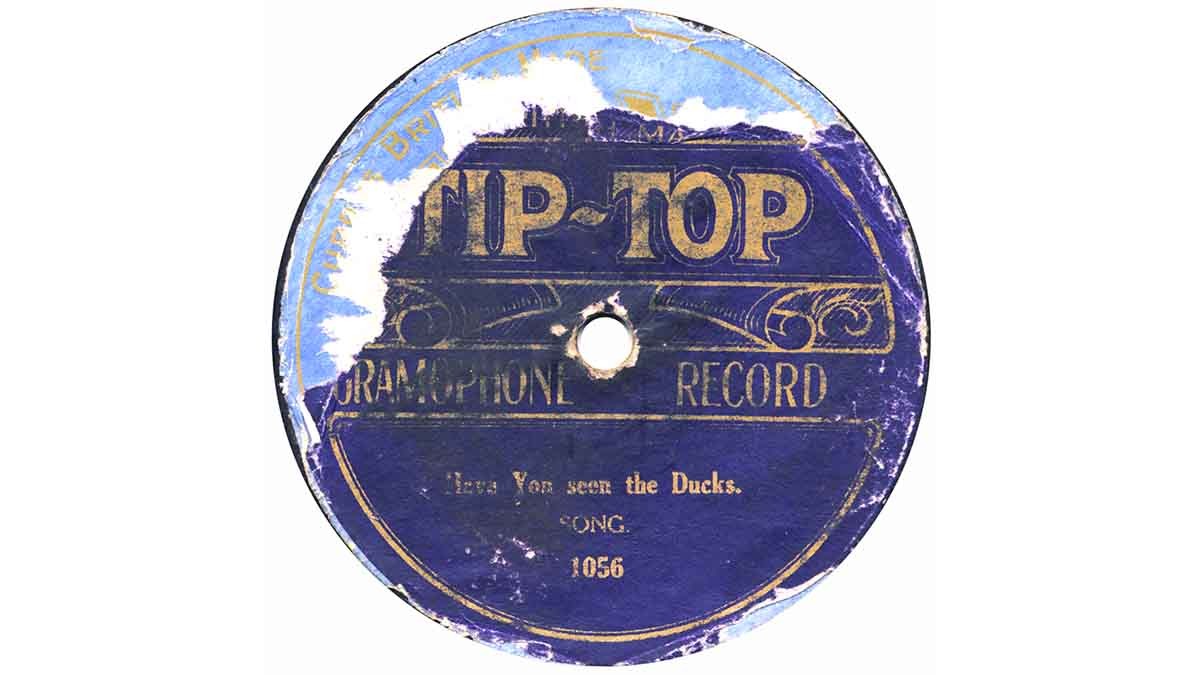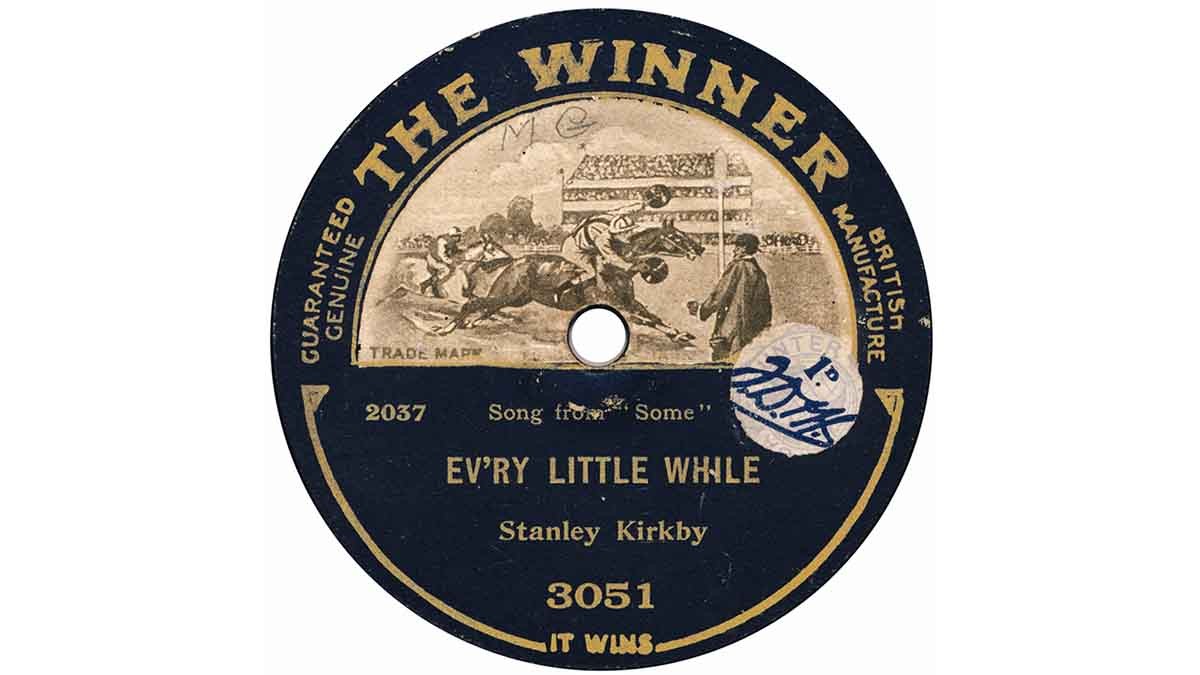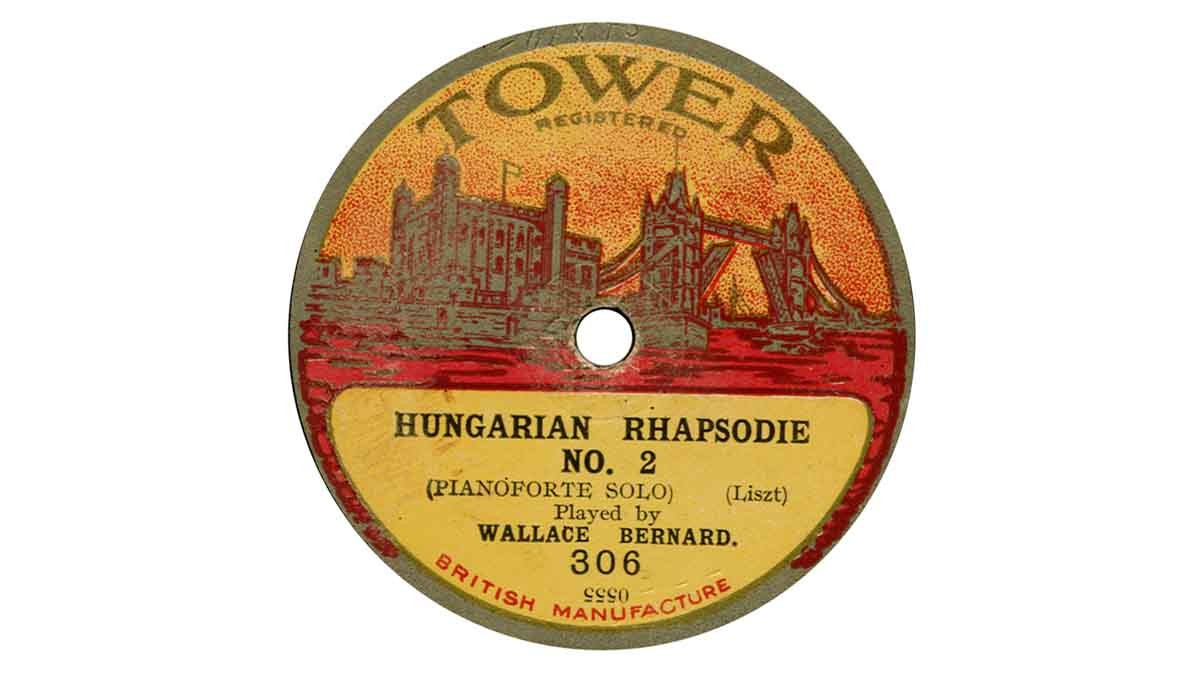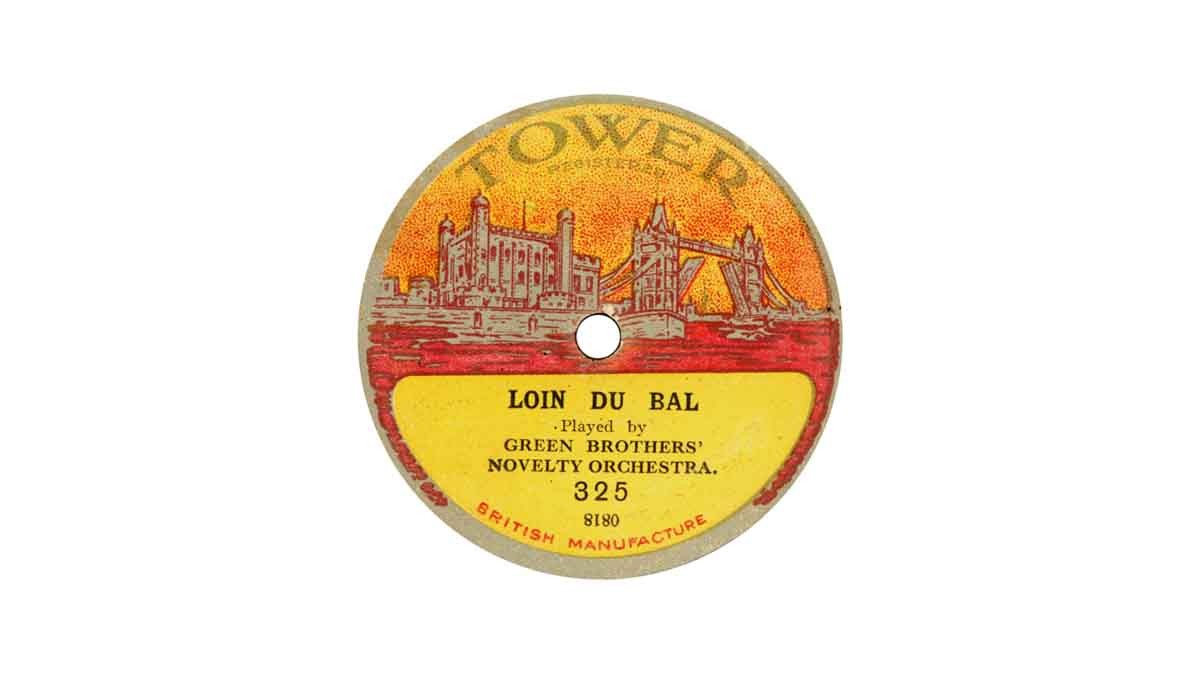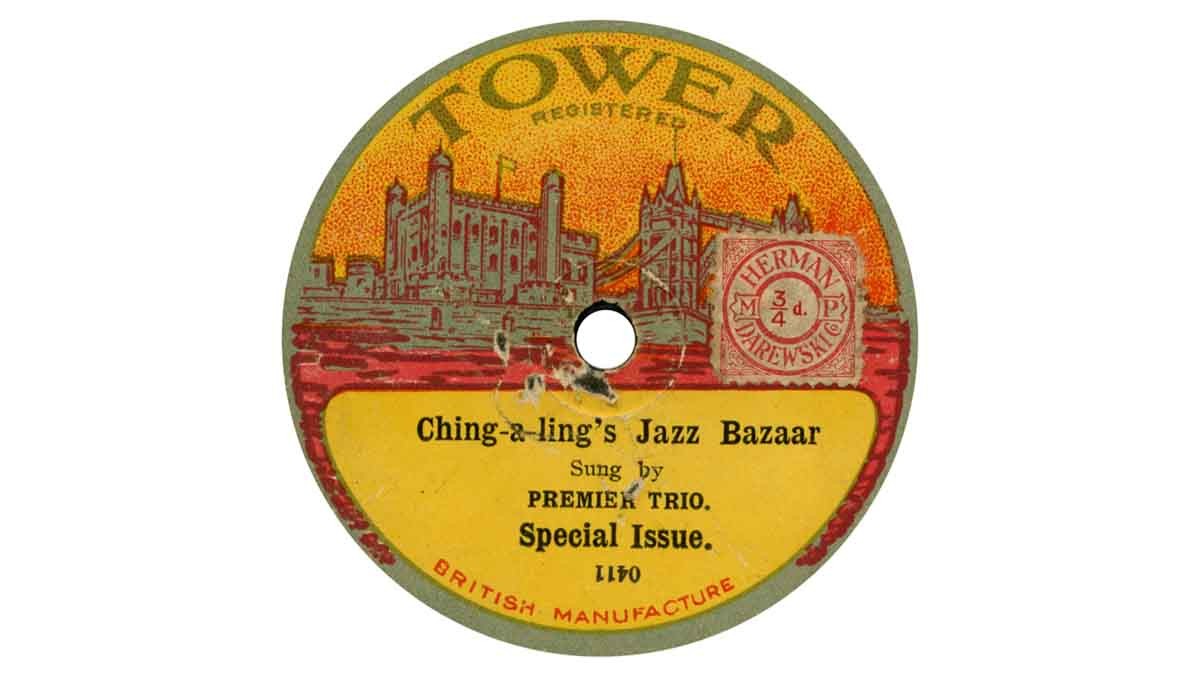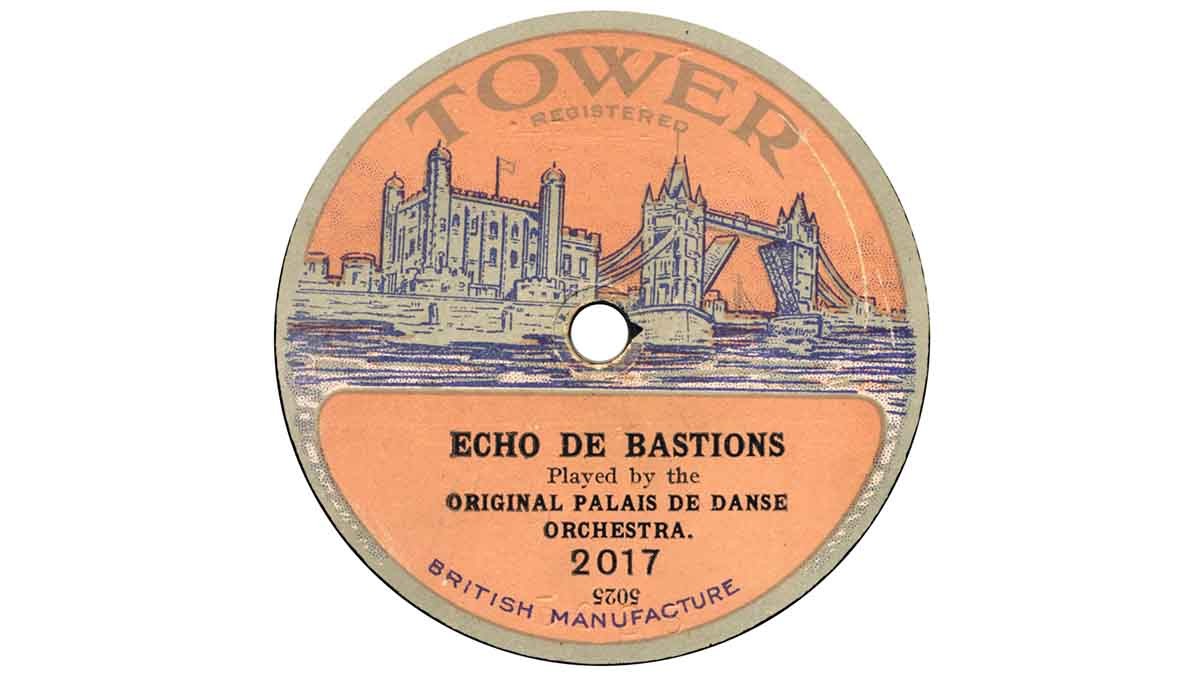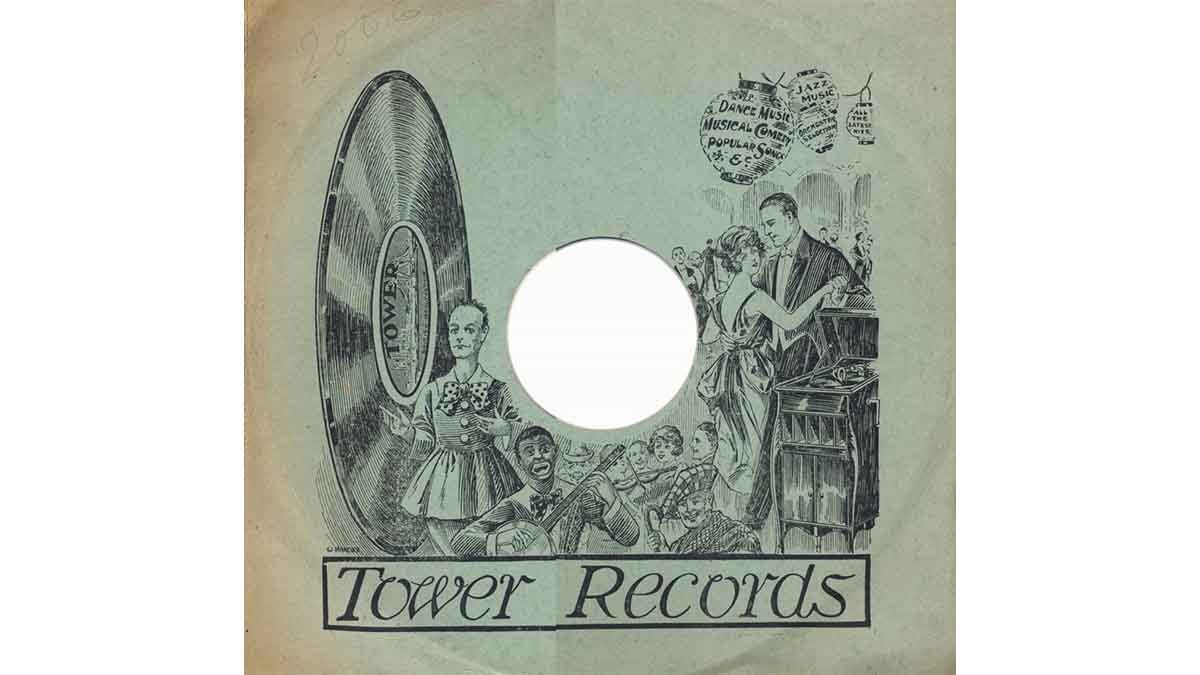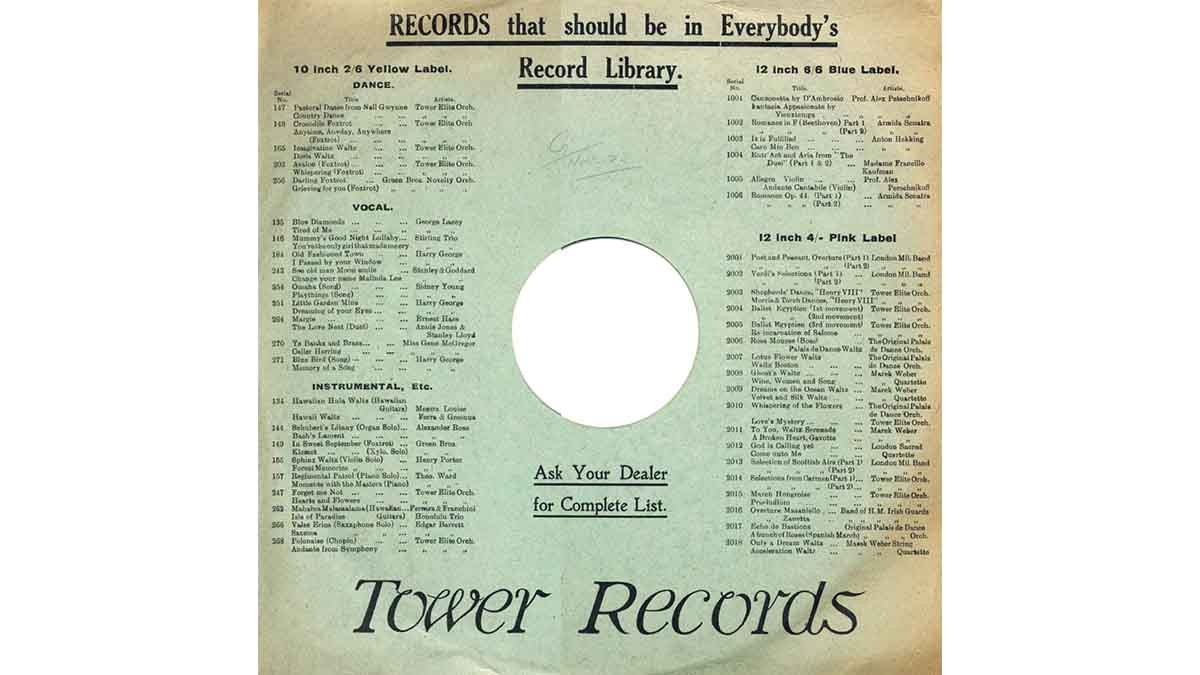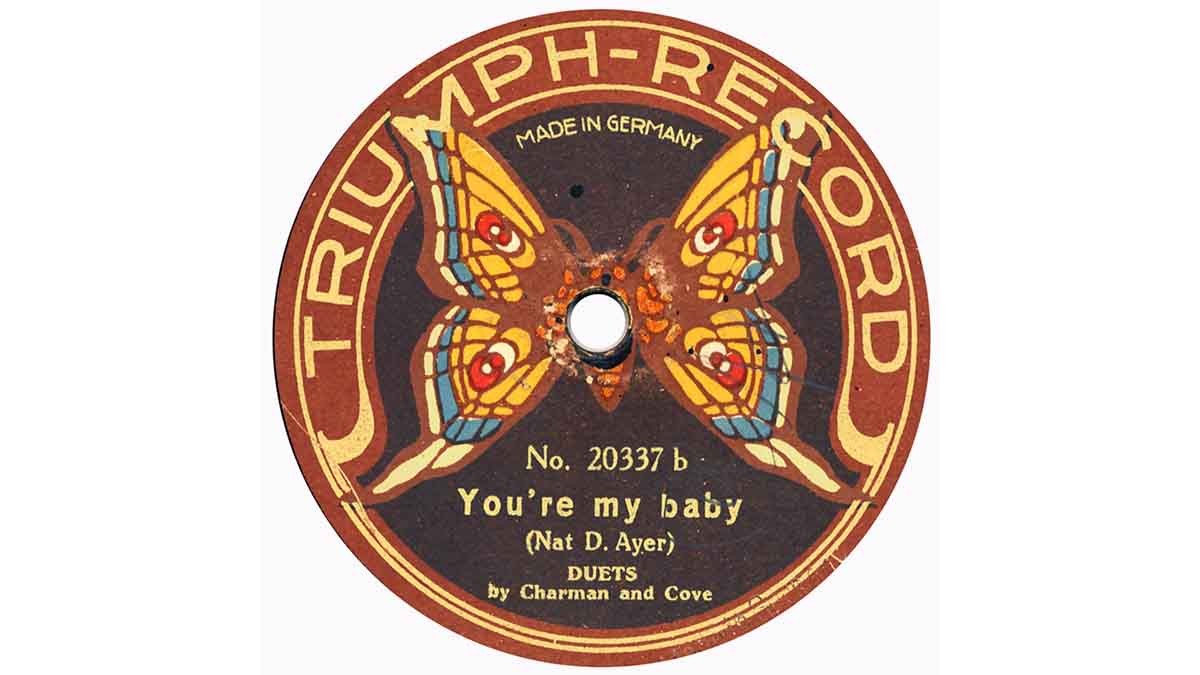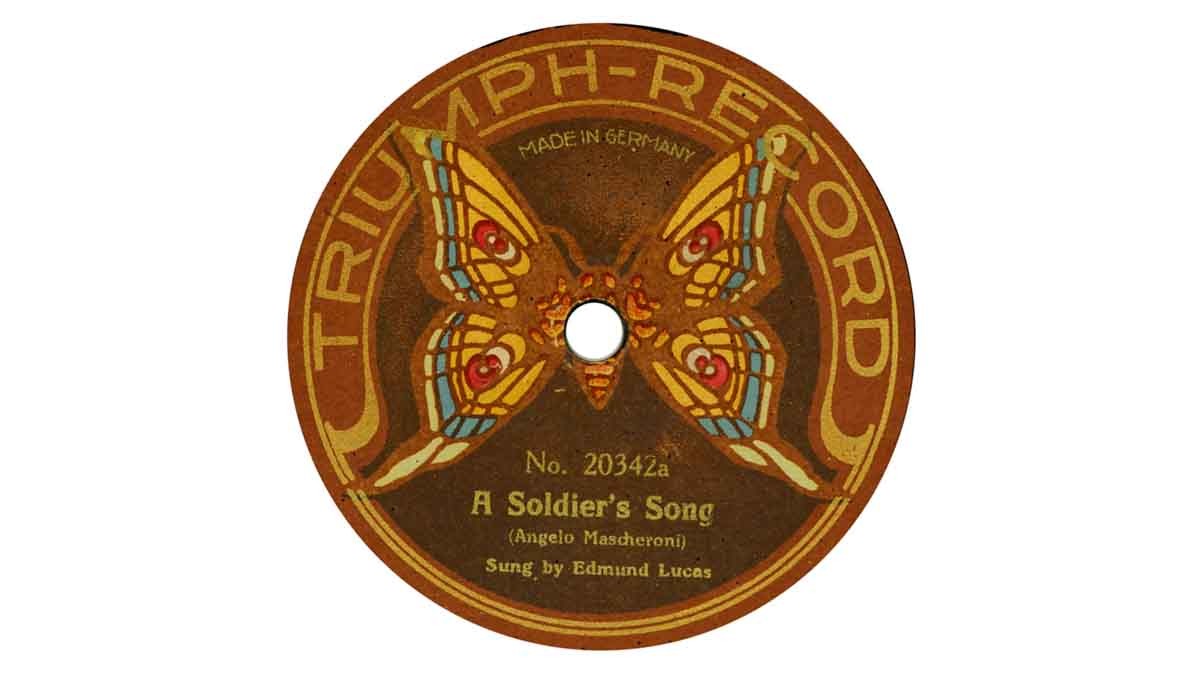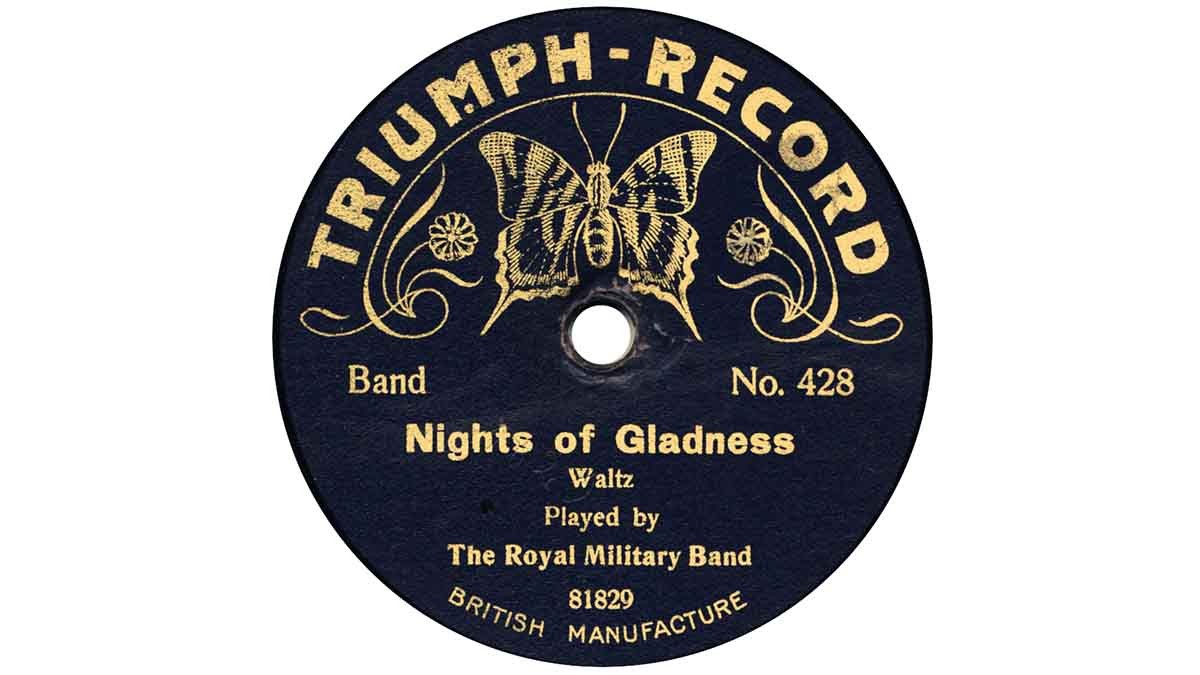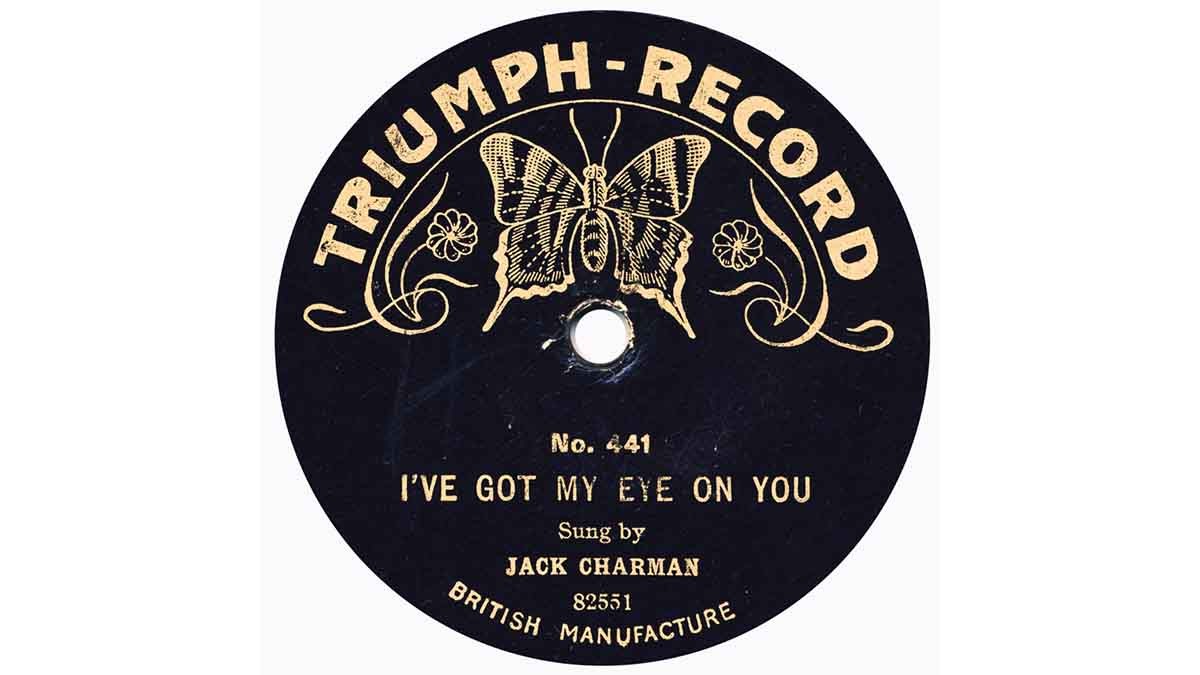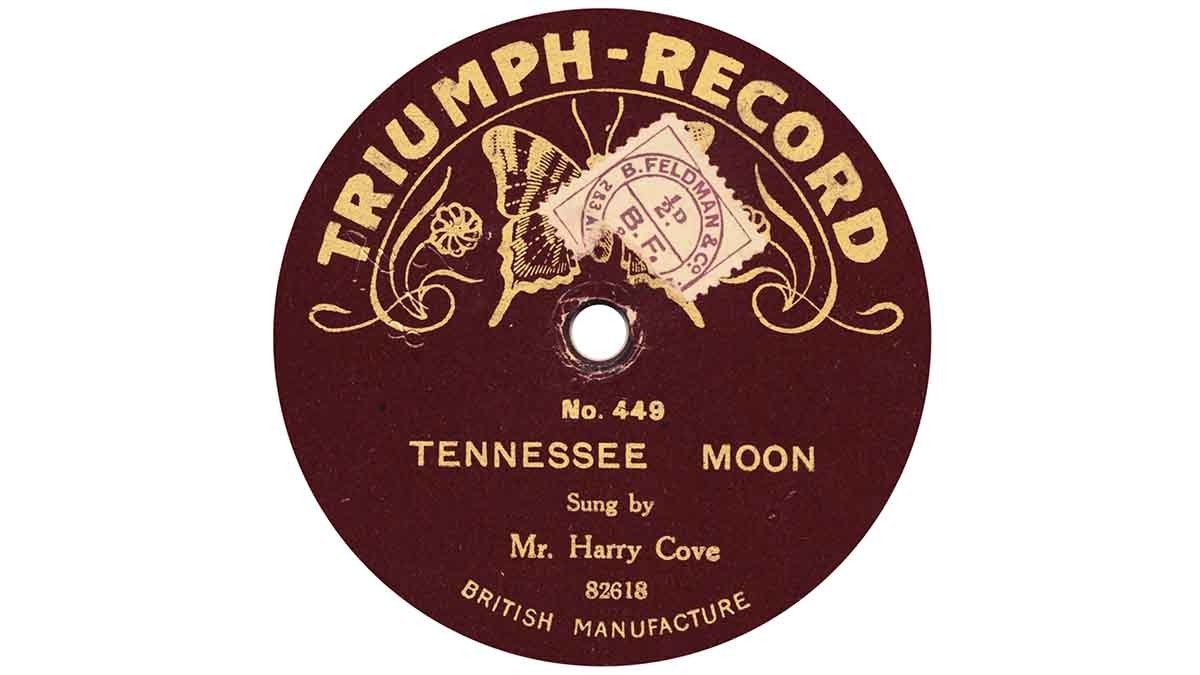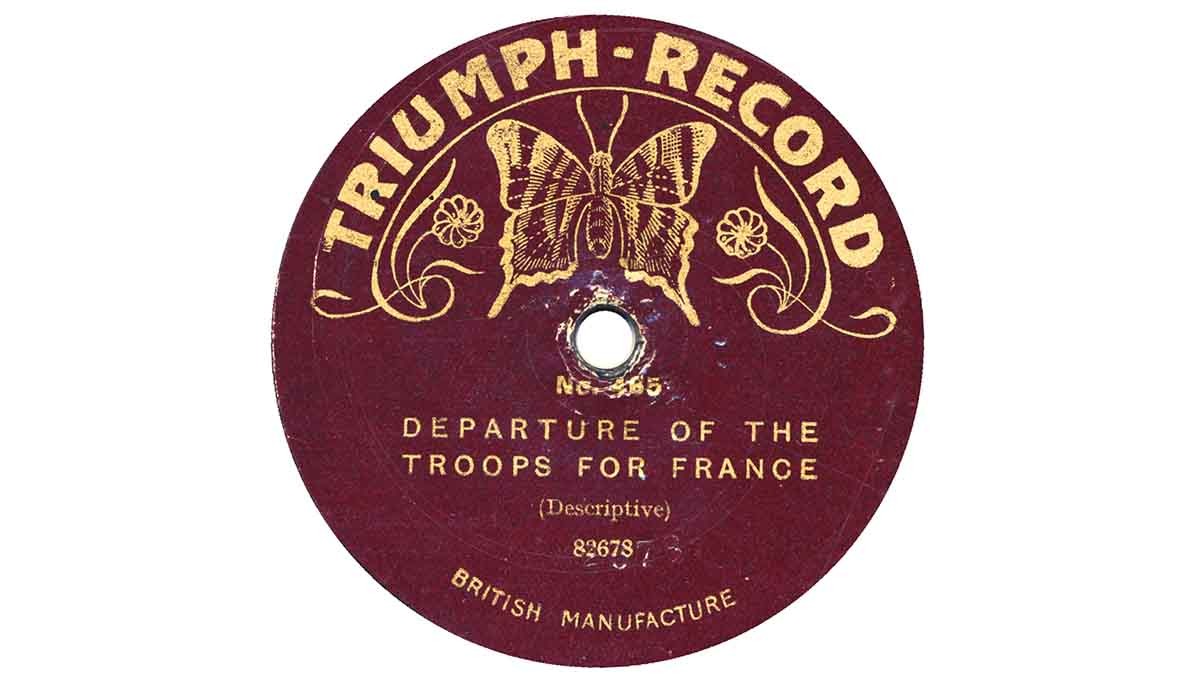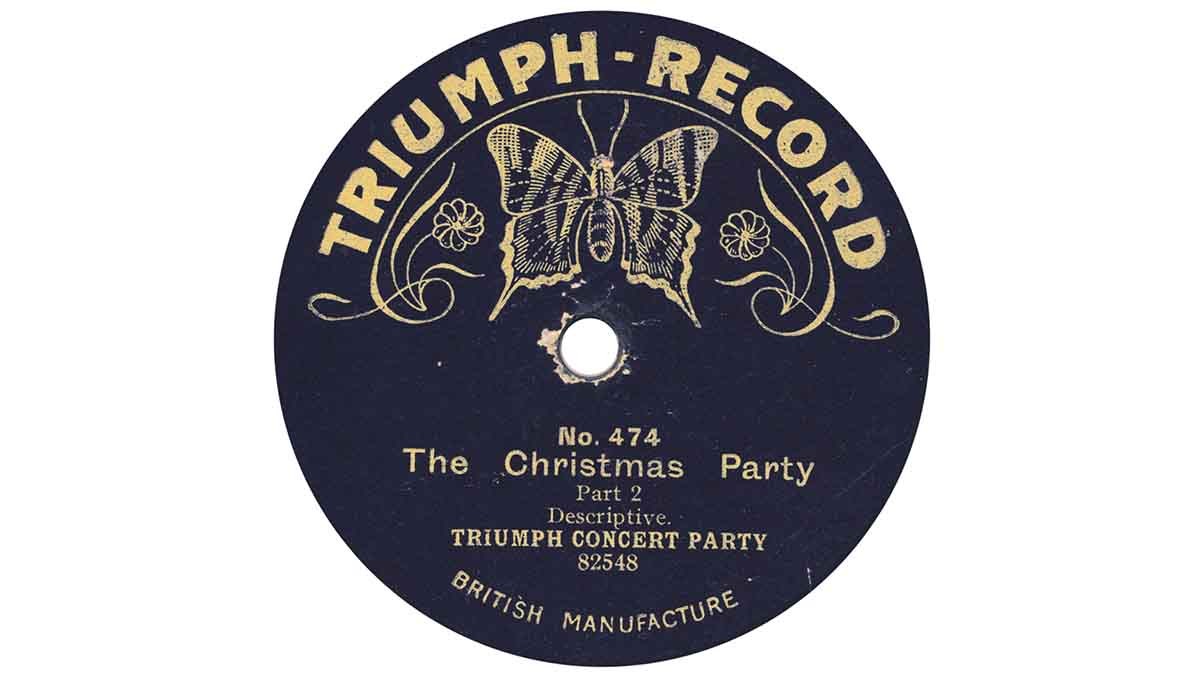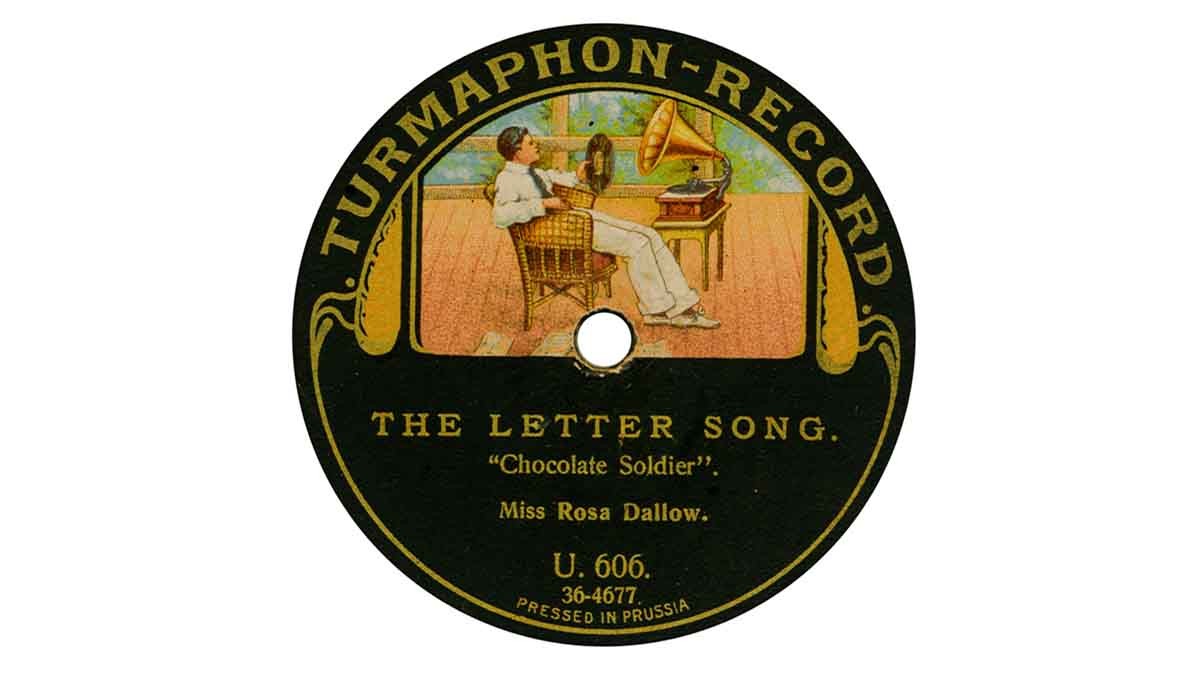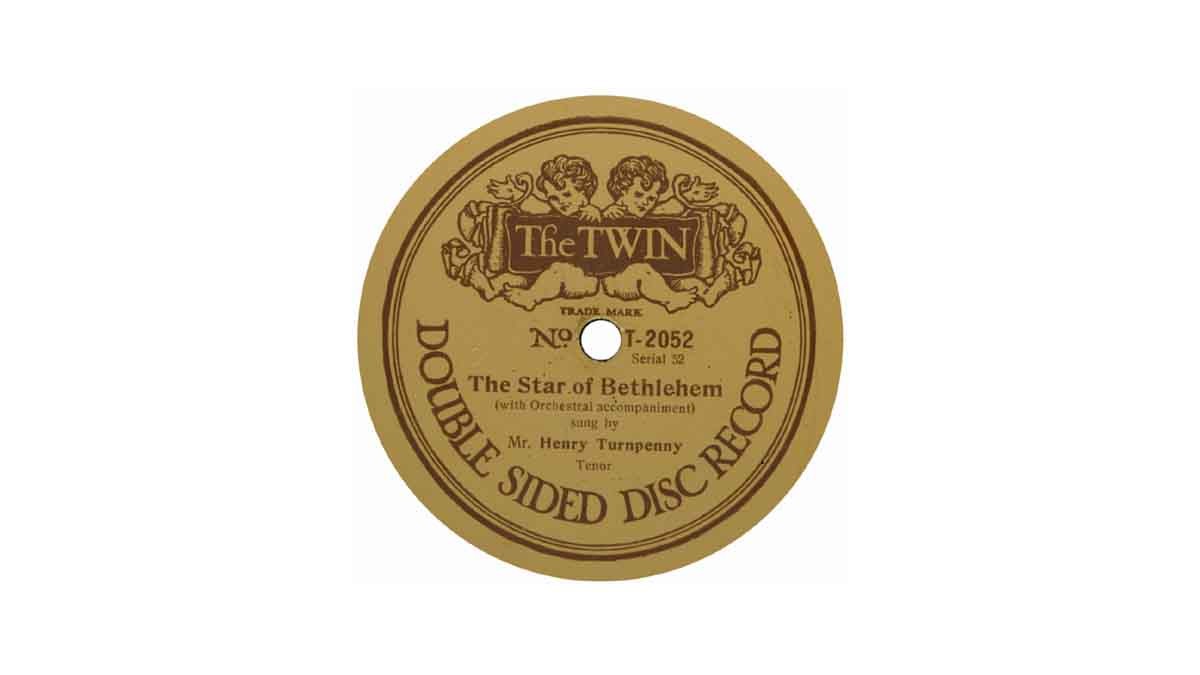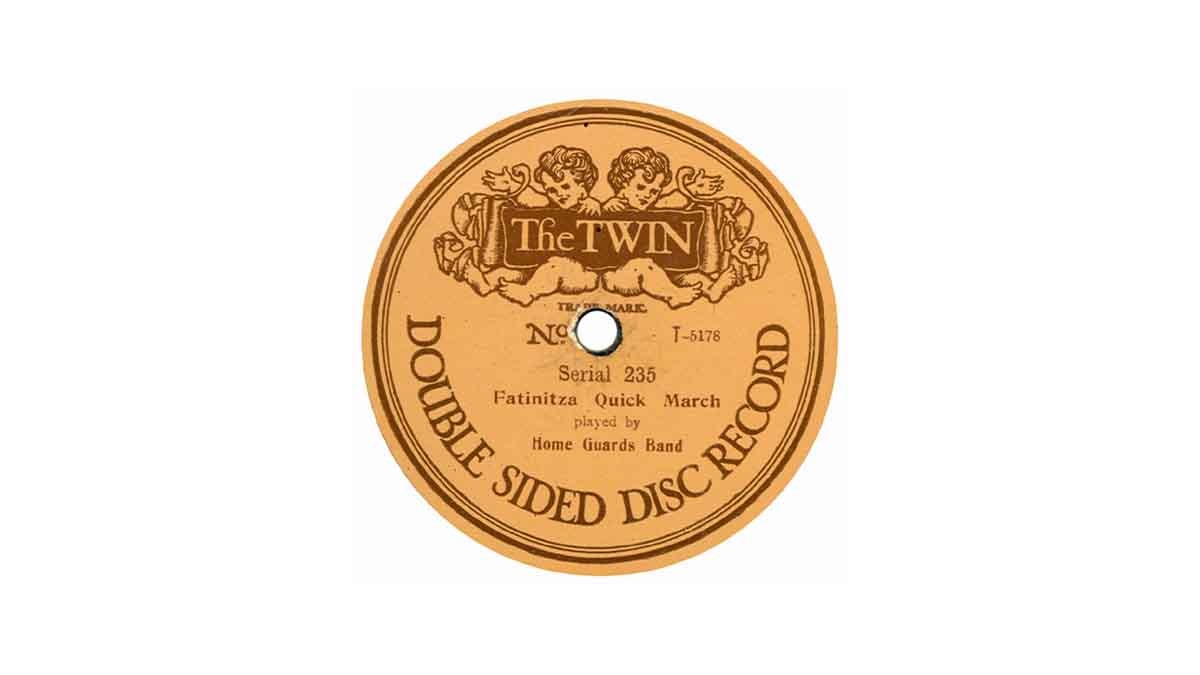
Tip-top
A very scarce label from an unknown proprietor. We first heard of the label when Guy LaBoissoniere of Vancouver kindly reported it to us. Edison Bell sold off surplus ‘Winner’ discs to traders who over-stuck their own labels on them. This is what happened here. The first example above is stuck, straightforwardly, on a Winner. The second is enigmatic. On top, there is a Tip-Top label (which should carry the full title: ‘Have You Seen the Ducks Go By?’) which appears to be stuck over two superimposed Portland labels. Portland was a label belonging to Curry’s, who also used Winner surplus stock. Next is shown the other side of the same disc, Winner 3051. It has no sign of ever having anything stuck over it! On the whole, we wish there were no such things as records with one label on one side, and FOUR on the other – it tends to induce strange, uneasy dreams. From the dates of the Winners, we deduce that Tip-Top had its fleeting existence around 1917-1919.
Tower
‘Tower Records (1920-1922)’, a listing and extensive analysis of the sources of the sides it issued, was privately published by the late Arthur Badrock in 2001. Fortunately, it is still available from the CLPGS bookshop pages.
Do not be deceived by the modest size of this 54 page A5 booklet: it is a masterly work of research and compilation which occupied Arthur for many years and contains information & explanations which interconnect with many other labels: Guardsman, Gennett, Anker (German), Scala/Coliseum, Homophon, U.S. Vocalion &c. Towers are generally scarce.
Triumph
See FA/WDM, FTR 60, 2016. Another elusive label, but one can’t have too many of them, as the early ones are so gorgeous. The design is the same as Bel Canto, but while the Bel Cantos seem related to Dacapo, early Triumphs are very closely related to Invicta. Because if you subtract 20,000 from the Triumph catalogue number, you end up with an Invicta catalogue number. Whether there is a ‘complete set’ of interlocking Invictas and Triumphs is not known to us. If that is the case, there would be about 360 Triumphs of the original sort, dating from about 1912-1914. Whoever was selling Triumph records (and it must be said, in view of their scarcity, that they don’t seem to have been very good at it), their supplies from Germany, modest as they must have been, vanished overnight on the declaration of war with that country in August 1914. Determinedly, the proprietor (whoever it was) then engaged the Disc Record Company of Harrow to produce Triumph. These were in a 400 series and carried either dark blue or plum labels. And while the DRC held its own stock of masters, some of them dating back to 1905, it had never had any new recordings made. Now the London wholesaler Lionel Blum had faced exactly the same problem of supply, since his labels (Victory, Diploma and Pioneer among others) had also been pressed in Germany. Enterprisingly, Blum had new recordings made in London, and pressed by the DRC. Those masters were in a 2000 series, and may be found on Diploma and Pioneer. However, Blum’s masters also appeared on Triumph, though prefixed with the number 8, as can be seen on No. 465 above: the label bears 82678, while in the wax below it, 2678 may be seen pressed into the disc itself. Blum seems have allowed the DRC to use his masters on Triumph. Indeed, Blum is stated to have ‘bought into’ the DRC, which would fit perfectly. However, the story does not have a happy ending, for the DRC went bankrupt in early 1915. Elsewhere, Frank Andrews has stated that Blum’s business was also liquidated in April 1915 – so these two windings-up are probably one and the same? Thus there is a very narrow time-scale for the second incarnation of Triumph: perhaps late 1914 to mid-1915. But the most fascinating thing to me about Triumph records is the transmogrification, mirabile dictu, of the magnificent male silk-moth portrayed on the original Triumphs, into a butterfly on the later issues…
Turmaphon
Turmaphon discs bear lovely labels. To me, they portray a tea- or rubber-planter in the Far East, relaxing on the verandah after a refreshing shower following a long hard day riding around the plantation. He is doubtless selecting a suitable record as background music for his first stengah of the evening. But seriously, though these discs are very scarce, they were made in Germany by the Turmalin-Derby Werke, a very active company. But it would appear – as with Lyraphon– that Turmalin-Derby Werke products under their own name were simply not imported to the U.K. in any numbers. Even though London-recorded sides appeared on Turmaphon (e.g. the Rose Dallow above), that does not mean Turmalin-Derby actually recorded here. In fact, Turmalin-Derby had acquired the masters of the defunct Bel Canto concern (and others too), and used them itself. It also used them for contract pressings for other British companies, notably Leon Leibowich’s Pickofall Record.
The Twin
See Frank Andrew, BRI, also the introduction to his 350-page listing of double sided Zonophone records – details under Zonophone below. These were a product of The Gramophone Company, no less. They were introduced in August 1908, anonymously. There had been double sided discs sold in this country since about 1904, but the Gramophone Co. was wary of making them under its own name, as a patent existed for double sided records. It may be surprising that such a patent had been allowed; it is rather like patenting the idea of writing on both sides of a sheet of paper! Still, the Petit Patent, which originated in the U.S.A., had been granted there in 1903, and in several other countries including Canada, Brazil, Italy, Switzerland, Spain, Turkey and Austria. Its specification listed a number of advantages to be gained by pressing double sided records quite apart from the obvious one of having two selections on one disc – to read more about this, click here. However, the Austrian patent was overthrown in 1905, and an appeal to have it reinstated was rejected in May 1906. Still the Gramophone Co. hesitated; but after some time decided to proceed with The Twin record. They were successful, and turn up reasonably often. The labels are reassuringly regular in design, but two distinct shades of paper were used, the darker being earlier. In May 1911, the label was merged with Zonophone when the latter became double sided too, and was re-christened ‘Zonophone Record – The Twin’.

